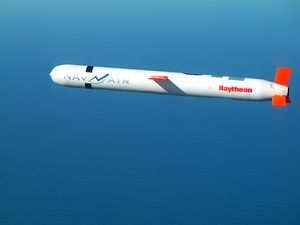The recent monograph by Dennis Gormley and Andrew Erickson on the development and relevance of China’s cruise missile force has received just acclaim from all quarters. Over the past two decades, China’s armed forces have developed a formidable array of cruise missiles to threaten U.S. and allied forces. Launched from land, surface ships, aircraft, and submarines, the cruise missiles can strike American ships and land installations, potentially rendering them unusable in case of conflict.
As Gormley and Erickson point out, the cruise missile array may be even more impressive than the development of anti-ship ballistic missiles. But what happens when other states start adopting China’s model?
Cruise missiles aren’t exactly weapons of the weak; they require a significant infrastructure to maintain and operate. A cruise missile system as sophisticated as China’s requires a huge investment over a long period of time. At the same time, states such as Iran, Iraq, and even Hezbollah have managed to use cruise missiles effectively in the past. If they can do so, then the deployment of an effective cruise missile force would fall well within the means of Vietnam, Taiwan, and the Philippines.
This has long been the double-edged sword of China’s A2/AD system-of-systems. As China develops more effective tools for power projection, other states will begin to see the appeal of anti-access systems.
Vietnam already has multiple platforms available for the deployment of cruise missiles. Su-30MKs can launch a variety of cruise missiles, as can the Kilo-class submarines recently acquired from Russia. Vietnam could also employ land based cruise missiles, and launch cruise missiles from its Russian-built frigates. Moreover, Vietnam could potentially acquire an arsenal of sophisticated cruise missiles from India, Russia, Europe, or the United States. The Philippines has fewer resources to draw upon, but could embark on a similar buildup.
Gormley’s book on cruise missiles discussed many of the conditions under which we should expect military technology to diffuse across the international system. Even if China doesn’t sell the missiles directly (as it has in the past), we can expect that the example of Chinese missiles, and perceptions of their potential effectiveness, will affect the procurement decisions of other states. Indeed, if fear of China drives the United States, India, and other nations to export cruise missiles, then we can expect these systems to rapidly proliferate across the international system.
In short, a decade from now the PLAN may be focused on the problem of managing the threat that Vietnamese and Philippine cruise missiles pose to its carrier battle groups. Gormley and Erickson note that the PLAN has already done extensive work on force protection against U.S. cruise missile attacks, but that its capabilities remain untested. The PRC’s struggle for regional military dominance is, in some sense, self-limiting. In the future, we may see China become more interested in multilateral efforts to limit the diffusion of the very anti-access technology it now depends on.

































